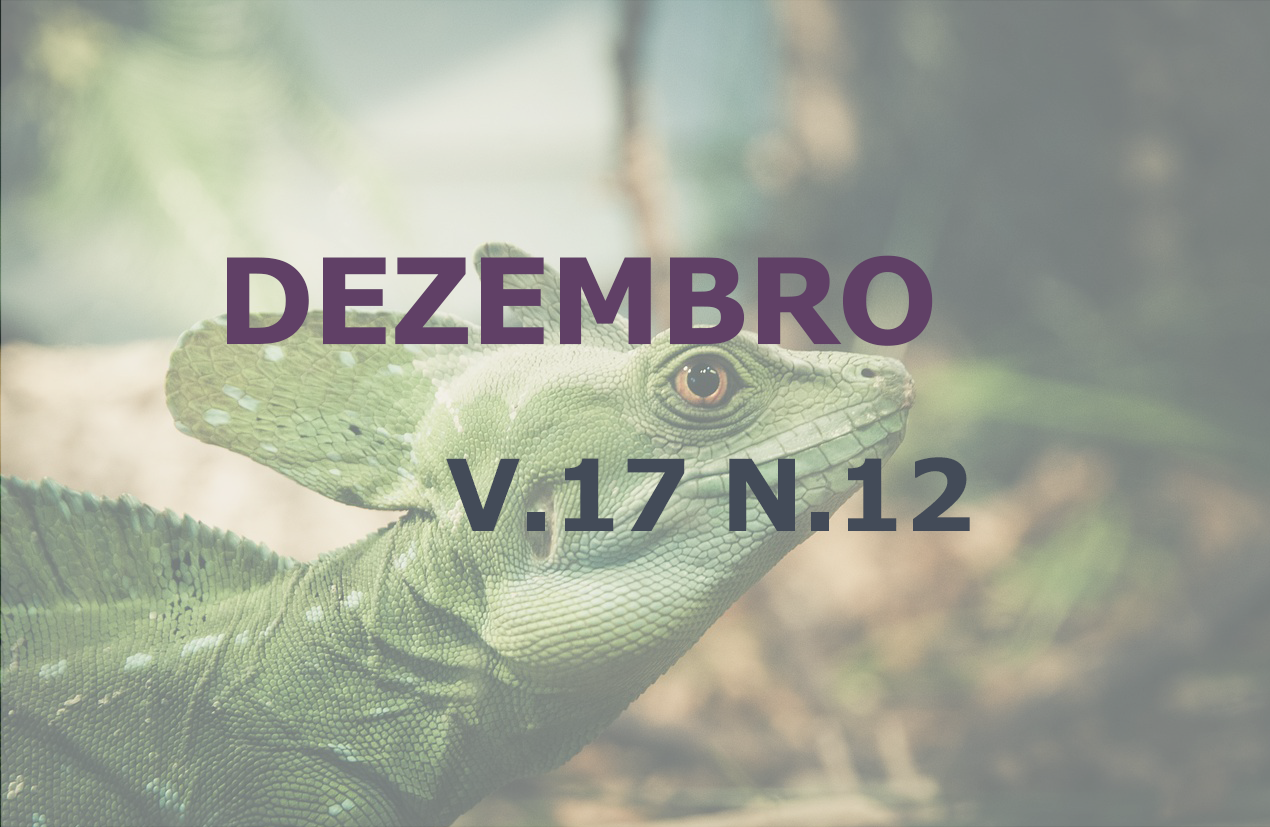Morphological aspects of eyeball extrinsic muscles and other anatomical aspects in a tapir (Tapirus terrestris): Case report
DOI:
https://doi.org/10.31533/pubvet.v17n12e1486Keywords:
eyes, intrinsic and extrinsic structures, mammals, morphologyAbstract
The aim of this work was to describe the morphological aspects of the eyeball and associated anatomical components of the Tapirus terrestris. The study was performed with two heads of unknown origin, donated to the Laboratory of Morphological studies of the Veterinary Medicine University in Araçatuba, São Paulo. External aspects revealed similarities with other mammals; however, the orbital cavity has an area of 20-mm3 ± 1.4 mm3, considered higher than a horse’s, for example. The description of eyeball muscles followed what has been described for other species with defined origin and insertion. The tapir is a mammal found in South America and almost all biomes, but with little information about its macro and microscopic morphology in literature. The choice of this species for the study is also justified based on their macro morphological features which, notably, are fundamental to the biological knowledge of the species. This kind of research contributes with relevant data about this species which is still scarcely studied.
References
Aparicio, P. M., & Plana, C. L. (2021). Atlas de anatomia de espécies silvestres amazônicas. ABEU.
Bertassoni, A. (2018). Family Myrmecophagidae (anteaters). Handbook of the Mammals of the World, 8, 74–91.
Burs, K., Möcklinghoff, L., Marques, M. I., & Schuchmann, L. (2022). Spatial and Temporal Adaptations of Lowland Tapirs (Tapirus terrestris) to Environmental and Anthropogenic Impacts. Life, 13(1), 66. https://doi.org/10.3390/life13010066.
Chalukian, S. C., Bustos, M. S., & Lizárraga, R. L. (2013). Diet of lowland tapir (Tapirus terrestris) in El Rey National Park, Salta, Argentina. Integrative Zoology, 8(1), 48–56. https://doi.org/10.1111/j.1749-4877.2012.12009.x.
Cordeiro, J. L. P., Fragoso, J. M. V, Crawshaw, D., & Oliveira, L. F. B. (2016). Lowland tapir distribution and habitat loss in South America. PeerJ, 4, e2456. https://doi.org/10.7717/peerj.2456. eCollection 2016.
Costa, A. L. M., Appolonio, E. V. P., Mattos, L. H. L., Rosa, G. S., Reis, L. S., Silva, B. M., Vasconcellos, M., Teixeira, R. H. F., & Alves, A. L. G. (2022). Surgical management of upward fixation of the patella via medial patellar ligament desmotomy in a lowland tapir (Tapirus terrestris). Journal of Zoo and Wildlife Medicine, 53(1), 222–227. https://doi.org/10.1638/2021-0041.
Cunha, M. S., Rossy, K. C., Conceição, M., Campos, J. G. M., Celestino, V. A., & Teixeira, P. P. M. (2018). Diagnóstico por imagens no estudo anatômico de animais selvagens com ênfase na preguiça. Investigação, 17(5), 32–37.
D’Ovidio, D., & Adami, C. (2019). Locoregional anesthesia in exotic pets. Veterinary Clinics: Exotic Animal Practice, 22(2), 301–314. https://doi.org/10.1016/j.cvex.2019.01.007.
Dyce, K. M., Sack, W. O., & Wensing, C. J. G. (2010). Tratado de anatomia veterinária. Elsevier, Rio de Janeiro.
Evans, H. E. (1993). Miller’s anatomy of the dog. Saunders Company.
Flesher, K. M., & Medici, E. P. (2022). The distribution and conservation status of Tapirus terrestris in the South American Atlantic Forest. Neotropical Biology and Conservation, 17(1), 1–19. https://doi.org/10.3897/ neotropical.17. e71867.
Garcia, M. J., Medici, E. P., Naranjo, E. J., Novarino, W., & Leonardo, R. S. (2012). Distribution, habitat and adaptability of the genus Tapirus. Integrative Zoology, 7(4), 346–355. https://doi.org/10.1111/j.1749-4877.2012.00317.x.
Linnaeus, C. (1789). Systema Naturae per regna tria naturae, secundum classes, ordines, genera, species; cum characteribus, differentiis, synonymis, locis (Vol. 1). apud JB Delamolliere.
Maggs, D., Miller, P., & Ofri, R. (2017). Slatter’s Fundamentals of Veterinary Ophthalmology E-Book. Elsevier Health Sciences.
Moyano, S. R., & Giannini, N. P. (2017). Comparative cranial ontogeny of Tapirus (Mammalia: Perissodactyla: Tapiridae). Journal of Anatomy, 231(5), 665–682. https://doi.org/10.1111/joa.12666.
Nickel, R., Schummer, A., Seiferle, E., & Böhme, G. (2004). Nervensystem, sinnesorgane, endokrine drüsen. Parey Stuttgart.
Nomina. (1973). Nomina anatomica veterinaria. International Committee on Veterinary Anatomical Nomenclature.
Slatter, D. (2005). Fundamentos de oftalmologia veterinária. Editora Roca.
Thrall, D. E. (2019). Diagnóstico de radiologia veterinária. Guanabara Koogan S.A.
Tobler, M. W., Janovec, J. P., & Cornejo, F. (2010). Frugivory and seed dispersal by the lowland tapir Tapirus terrestris in the Peruvian Amazon. Biotropica, 42(2), 215–222. https://doi.org/10.1111/j.1744-7429.2009.00549.x.
Downloads
Published
Issue
Section
License
Copyright (c) 2023 Icaro ASP de Godoy, Damião Pinheiro de Oliveira, Rebeca Figueiredo Nalesso, Jamila Cristina Baptistella, Letícia Colin Panegossi, Tereza Cristina Cardoso

This work is licensed under a Creative Commons Attribution 4.0 International License.
Você tem o direito de:
Compartilhar — copiar e redistribuir o material em qualquer suporte ou formato
Adaptar — remixar, transformar, e criar a partir do material para qualquer fim, mesmo que comercial.
O licenciante não pode revogar estes direitos desde que você respeite os termos da licença. De acordo com os termos seguintes:
Atribuição
— Você deve dar o crédito apropriado, prover um link para a licença e indicar se mudanças foram feitas. Você deve fazê-lo em qualquer circunstância razoável, mas de nenhuma maneira que sugira que o licenciante apoia você ou o seu uso. Sem restrições adicionais
— Você não pode aplicar termos jurídicos ou medidas de caráter tecnológico que restrinjam legalmente outros de fazerem algo que a licença permita.





